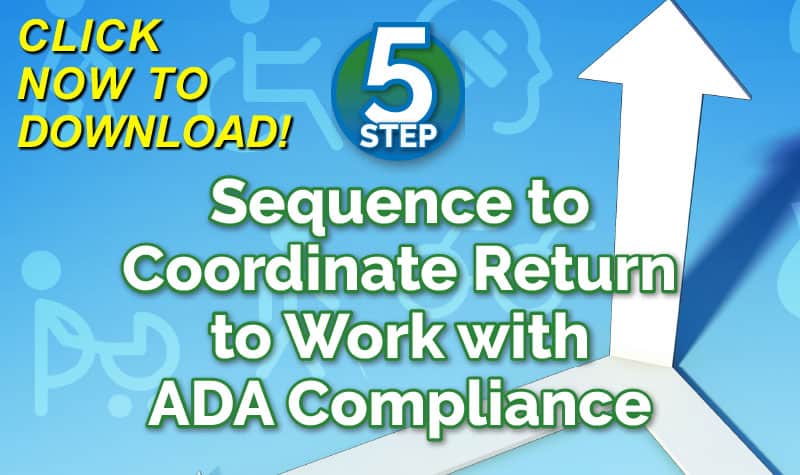Every day, about 14 Americans fail to come home from work to their families. Tens of thousands die from workplace disease and more than 4.6 million workers are seriously injured on the job annually.
The U.S. Department of Labor's Occupational Safety and Health Administration (OSHA), in an effort to address urgent safety and health problems facing Americans in the workplace, is implementing a new Severe Violator Enforcement Program and increasing civil penalty amounts.
"For many employers, investing in job safety happens only when they have adequate incentives to comply with OSHA's requirements," said Assistant Secretary of Labor for OSHA Dr. David Michaels. "Higher penalties and more aggressive, targeted enforcement will provide a greater deterrent and further encourage these employers to furnish safe and healthy workplaces for their employees."
The new Severe Violator Enforcement Program is intended to focus OSHA enforcement resources on recalcitrant employers who endanger workers by demonstrating indifference to their responsibilities under the law. This supplemental enforcement tool includes increased OSHA inspections in these worksites, including mandatory OSHA follow-up inspections, and inspections of other worksites of the same employer where similar hazards and deficiencies may be present. SVEP will become effective within the next 45 days.
Last year, OSHA assembled a work group to evaluate its penalty policies and found currently assessed penalties were too low to have an adequate deterrent effect. Based on the group's findings and recommendations, several administrative changes to the penalty calculation system, outlined in the agency's Field Operations Manual, are being made. These administrative enhancements become effective in the next several months. The penalty changes increase the overall dollar amount of all penalties while maintaining OSHA's policy of reducing penalties for small employers and those acting in good faith.
The current maximum penalty for a serious violation, one capable of causing death or serious physical harm, is only $7,000 and the maximum penalty for a willful violation is $70,000. The average penalty for a serious violation will increase from about $1,000 to an average $3,000 to $4,000. Monetary penalties for violations of the OSH Act have been increased only once in 40 years despite inflation. The Protecting America's Workers Act would raise these penalties, for the first time since 1990, to 12,000 and $250,000, respectively.
The U.S. Department of Labor's Occupational Safety and Health Administration (OSHA), in an effort to address urgent safety and health problems facing Americans in the workplace, is implementing a new Severe Violator Enforcement Program and increasing civil penalty amounts.
"For many employers, investing in job safety happens only when they have adequate incentives to comply with OSHA's requirements," said Assistant Secretary of Labor for OSHA Dr. David Michaels. "Higher penalties and more aggressive, targeted enforcement will provide a greater deterrent and further encourage these employers to furnish safe and healthy workplaces for their employees."
The new Severe Violator Enforcement Program is intended to focus OSHA enforcement resources on recalcitrant employers who endanger workers by demonstrating indifference to their responsibilities under the law. This supplemental enforcement tool includes increased OSHA inspections in these worksites, including mandatory OSHA follow-up inspections, and inspections of other worksites of the same employer where similar hazards and deficiencies may be present. SVEP will become effective within the next 45 days.
Last year, OSHA assembled a work group to evaluate its penalty policies and found currently assessed penalties were too low to have an adequate deterrent effect. Based on the group's findings and recommendations, several administrative changes to the penalty calculation system, outlined in the agency's Field Operations Manual, are being made. These administrative enhancements become effective in the next several months. The penalty changes increase the overall dollar amount of all penalties while maintaining OSHA's policy of reducing penalties for small employers and those acting in good faith.
The current maximum penalty for a serious violation, one capable of causing death or serious physical harm, is only $7,000 and the maximum penalty for a willful violation is $70,000. The average penalty for a serious violation will increase from about $1,000 to an average $3,000 to $4,000. Monetary penalties for violations of the OSH Act have been increased only once in 40 years despite inflation. The Protecting America's Workers Act would raise these penalties, for the first time since 1990, to 12,000 and $250,000, respectively.
Future penalty increases would also be tied to inflation. In the meantime, OSHA will focus on outreach in preparation of implementing this new penalty policy. (workersxzcompxzkit)
"Although we are making significant adjustments in our penalty policy within the tight constraints of our law, this administrative effort is no substitute for the meaningful and substantial penalty changes included in PAWA," said Dr. Michaels. "OSHA enforcement and penalties are not just a reaction to workplace tragedies. They serve an important preventive function. OSHA inspections and penalties must be large enough to discourage employers from cutting corners or underfunding safety programs to save a few dollars."
Author Robert Elliott, executive vice president, Amaxx Risks Solutions, Inc. has worked successfully for 20 years with many industries to reduce Workers’ Compensation costs, including airlines, healthcare, manufacturing, printing/publishing, pharmaceuticals, retail, hospitality and manufacturing. He can be contacted at: Robert_Elliott@ReduceYourWorkersComp.com or 860-553-6604.
Podcast/Webcast: KNOW the new OSHA recordkeeping rules – or risk fines and criminal penalties.
Click Here:
WC Calculator: http://www.reduceyourworkerscomp.com/calculator.php
Do not use this information without independent verification. All state laws vary. You should consult with your insurance broker or agent about workers' comp issues.
© 2010 Amaxx Risk Solutions, Inc. All rights reserved under International Copyright Law. If you would like permission to reprint this material, contact Info@ ReduceYourWorkersComp.com.
















